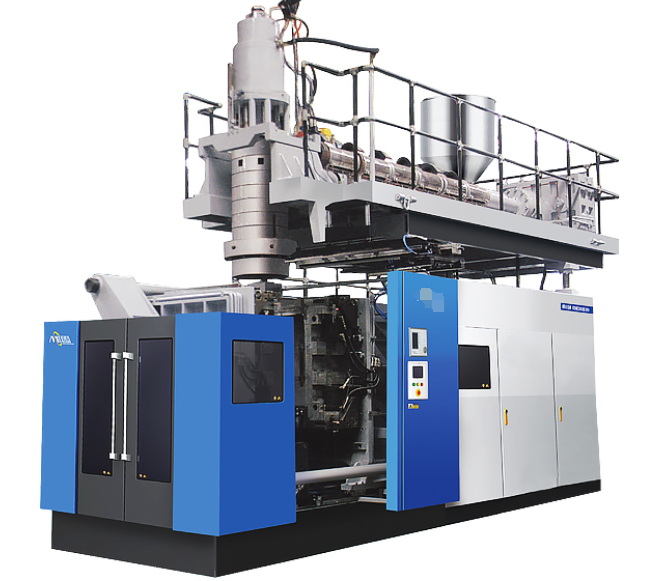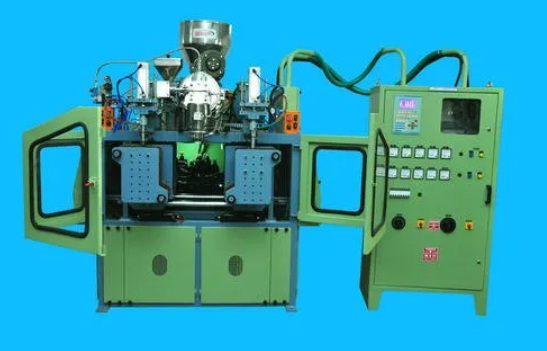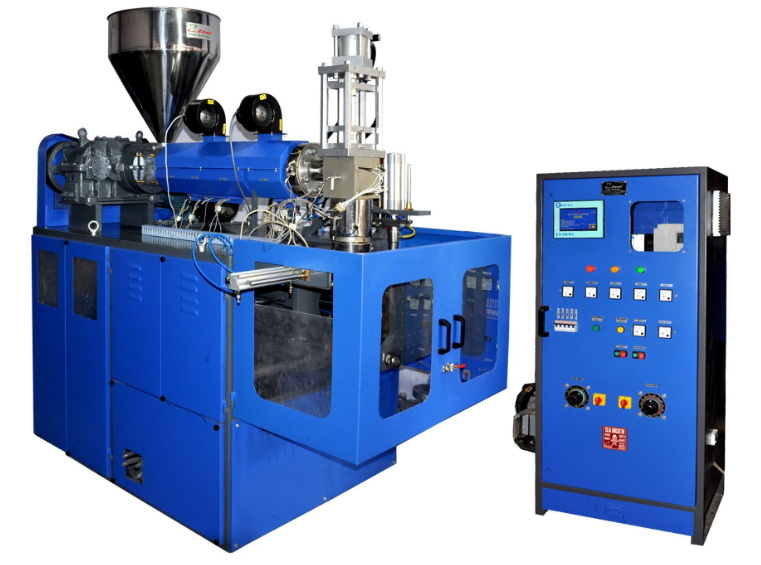Content Menu
● Introduction to Extrusion Blow Moulding Machinery
>> Advantages of Extrusion Blow Moulding Machinery
● Impact on Production Efficiency
>> Automation and Energy Efficiency
>> Cost-Benefit Analysis
● Applications of Extrusion Blow Moulding Machinery
>> Case Study: Automotive Components
● Future Trends and Innovations
>> New Designs and Technologies
>> Role of Asaclean in Efficiency
● Extrusion Blow Moulding vs. Other Technologies
>> Comparison of Technologies
● Conclusion
● FAQs
>> 1. What are the main advantages of using extrusion blow moulding machinery?
>> 2. How does automation impact the efficiency of extrusion blow moulding machinery?
>> 3. What types of industries use extrusion blow moulding machinery?
>> 4. How does energy efficiency contribute to the cost-effectiveness of extrusion blow moulding machinery?
>> 5. What are the future trends in extrusion blow moulding machinery?
● Citations:
Extrusion blow moulding machinery plays a pivotal role in enhancing production efficiency across various industries, particularly in the manufacturing of hollow plastic products such as bottles, containers, and drums. This technology has evolved significantly over the years, incorporating advanced automation, energy efficiency, and cost-effectiveness. In this article, we will delve into the impact of extrusion blow moulding machinery on production efficiency, exploring its advantages, applications, and future trends.

Introduction to Extrusion Blow Moulding Machinery
Extrusion blow moulding (EBM) is a process used to manufacture hollow plastic parts by extruding a tube of molten plastic called a parison, which is then captured in a mould and inflated with compressed air to take the shape of the mould. This process is widely used for producing containers, bottles, and other packaging materials due to its simplicity and cost-effectiveness.
Advantages of Extrusion Blow Moulding Machinery
1. High Production Efficiency: Extrusion blow moulding machines can produce a large number of products continuously, reducing manual intervention and increasing overall production speed. This efficiency is crucial for meeting high demand in industries such as packaging and consumer goods.
2. Wide Selection of Raw Materials: These machines can use various types of plastic materials, including polyethylene (PE) and polypropylene (PP), offering flexibility in product design and cost management.
3. Good Product Performance: Products made through EBM exhibit excellent strain resistance, impact strength, and durability, ensuring a long service life.
4. Low Equipment Cost: Compared to other plastic moulding technologies, extrusion blow moulding machines have relatively lower initial investment costs, making them accessible to small and medium-sized enterprises.
5. Easy Operation and Maintenance: The operation of these machines is straightforward, and maintenance requirements are minimal, contributing to reduced downtime and increased productivity.
Impact on Production Efficiency
Automation and Energy Efficiency
Extrusion blow moulding machinery is designed with automation in mind, reducing the need for manual labor and minimizing errors. This automation not only increases production speed but also ensures consistency in product quality. Additionally, modern EBM machines incorporate energy-saving technologies, such as servo systems and hybrid hydraulic systems, which reduce energy consumption and lower operational costs.
Cost-Benefit Analysis
The cost-effectiveness of extrusion blow moulding machinery is a significant factor in its adoption. The machinery requires a lower initial investment compared to other moulding technologies, and its operation involves lower labor costs due to automation. Moreover, the machinery covers a smaller area, reducing the need for extensive factory space and supporting infrastructure.
Applications of Extrusion Blow Moulding Machinery
Extrusion blow moulding machinery is versatile and is used across various industries:
- Packaging Industry: For bottles, containers, and other packaging materials.
- Pharmaceutical Industry: For producing medical containers and bottles.
- Food and Beverage Industry: For manufacturing containers for food and beverages.
- Automotive Industry: For producing fuel tanks and other automotive parts.
Case Study: Automotive Components
In the automotive industry, blow moulding is used to produce complex components such as air intake ducts. These components require precise control over material distribution to ensure durability and lightweight properties. Advanced blow moulding machines with multi-layer capabilities are ideal for such applications, as they can create intricate designs with varying thicknesses, meeting stringent industry standards.

Future Trends and Innovations
The future of extrusion blow moulding machinery is marked by advancements in automation, energy efficiency, and sustainability. Manufacturers are focusing on integrating all-electric systems and hybrid technologies to enhance precision and reduce environmental impact. Additionally, there is a growing emphasis on using recycled materials and minimizing waste in the production process.
New Designs and Technologies
Recent innovations include the introduction of all-electric packaging machines and industrial units with novel clamp designs. These machines are designed to offer flexibility and short delivery times, featuring energy-optimized extruders and advanced control systems. The integration of Industry 4.0 technologies, such as remote digital troubleshooting and AI product-quality monitoring, further enhances efficiency and product consistency.
Role of Asaclean in Efficiency
In extrusion blow moulding, maximizing production efficiency is crucial. Asaclean, a cleaning solution, plays a significant role in minimizing downtime by efficiently handling material and color changes. This is particularly beneficial for operations involving frequent changes, as it reduces the time required for cleaning and material switching, thereby enhancing continuous production efficiency.
Extrusion Blow Moulding vs. Other Technologies
Extrusion blow moulding is often compared to other moulding technologies like injection blow moulding. While injection blow moulding offers more complex product designs, extrusion blow moulding is preferred for its lower costs and simpler process. The machinery costs for extrusion blow moulding are lower, and it requires less pressure, making it more cost-effective for bulk production of packaging products.
Comparison of Technologies
| Technology | Advantages | Disadvantages |
| Extrusion Blow Moulding | Lower costs, simpler process, high productivity | Limited design complexity |
| Injection Blow Moulding | Complex product designs, precise control | Higher costs, more complex machinery |
Conclusion
Extrusion blow moulding machinery significantly impacts production efficiency by offering high-speed production, cost-effectiveness, and versatility in product design. As technology continues to evolve, these machines will play an increasingly important role in meeting the demands of various industries while minimizing environmental impact.

FAQs
1. What are the main advantages of using extrusion blow moulding machinery?
Extrusion blow moulding machinery offers high production efficiency, a wide selection of raw materials, good product performance, low equipment costs, and easy operation and maintenance.
2. How does automation impact the efficiency of extrusion blow moulding machinery?
Automation in extrusion blow moulding reduces manual labor, increases production speed, and ensures consistency in product quality, thereby enhancing overall efficiency.
3. What types of industries use extrusion blow moulding machinery?
Extrusion blow moulding machinery is used in the packaging, pharmaceutical, food and beverage, and automotive industries.
4. How does energy efficiency contribute to the cost-effectiveness of extrusion blow moulding machinery?
Energy efficiency in extrusion blow moulding machinery reduces operational costs by minimizing energy consumption, which is achieved through the use of servo systems and hybrid hydraulic systems.
5. What are the future trends in extrusion blow moulding machinery?
Future trends include advancements in automation, integration of all-electric systems, and a focus on sustainability through the use of recycled materials and waste reduction.
Citations:
[1] https://www.ptonline.com/articles/new-designs-for-electric-hybrid-packaging-and-industrial-blow-molders
[2] https://www.asahi-kasei.co.jp/asaclean/en/case-studies/Extrusion-Blow-Molding-Cases.html
[3] https://cmppin.com/blog/the-future-of-the-extrusion-blow-molding-machine/
[4] https://www.yankangmachine.com/blow-molding-machine-technology/
[5] https://autoplasticsworld.com/blow-molding-machines-blow-molding-process/
[6] https://www.wangbrand.com/en/faq_02.htm
[7] https://www.st-blowmoulding.com/products/parison-suction-aspi-series
[8] https://www.technepackaging.com/en/technology/save-energy/
[9] https://www.technepackaging.com/en/technology/fast-cooling/
[10] https://www.alpla.com/en/capabilities/technologies
[11] http://mw-blowingmachine.com/case-studies.html
[12] https://xometry.pro/en/articles/blow-molding-overview/
[13] https://www.globenewswire.com/news-release/2024/11/19/2983639/28124/en/Blow-Molding-Machines-Industry-Overview-2024-2030-Regional-Insights-Raw-Material-Usage-Process-Type-Developments-End-Use-Sector-Analysis-Competitive-Landscape.html
[14] https://geminigroup.net/engineered-plastics/technical-blow-molding/manufacturing-capabilities/extrusion-blow-molding/
[15] https://www.sustainableplastics.com/news/role-digitalisation-blow-molding-production
[16] https://www.daobenmachinery.com/advancements-in-moulding-plastic-machine/
[17] https://ressources-naturelles.canada.ca/sites/nrcan/files/oee/files/pdf/industrial/plastics-guide-english-january-2008.pdf
[18] https://cmppin.com/blog/can-extrusion-blow-molding-produce-complicated-shapes/
[19] https://www.plasticsnews.com/topic/blow-molding-machinery
[20] http://www2.nkust.edu.tw/~jcyu/WebsiteData/Website/CED_Lab/doc/JIM_funga_p1.pdf






















